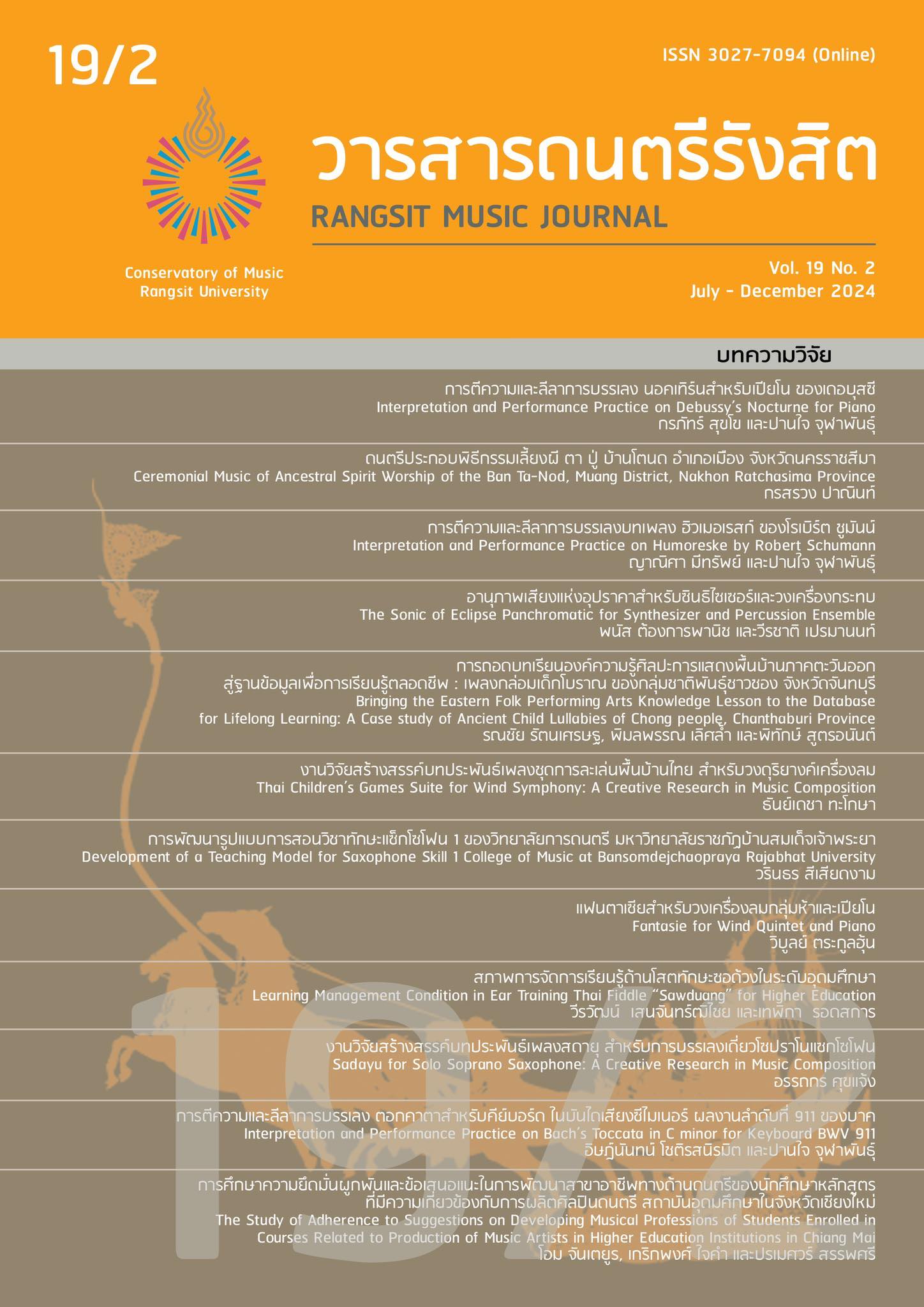Bringing the Eastern Folk Performing Arts Knowledge Lesson to the Database for Lifelong Learning: A Case study of Ancient Child Lullabies of Chong people, Chanthaburi Province
DOI:
https://doi.org/10.59796/rmj.V19N2.2024.R0505Keywords:
Knowledge Lesson, Chong People, Ancient Child LullabiesAbstract
This research was a qualitative study with the objective of exploring the community's way of life and creating knowledge about traditional performing arts in the eastern region through the lesson extraction process. The case study focused on the ancient lullabies of the Chong ethnic group in Chanthaburi province to compile a database of traditional performing arts in the eastern region.
The study revealed that the lifestyle of the Chong ethnic group, especially in the past, had distinctive characteristics and reasons for their way of life. The beliefs of the Chong community led to customs related to their way of life in the community, which contributed to the integration of traditional performing arts originating from the wisdom of the Chong people. These arts were invented to support various activities, and as a result, artists emerged with abilities to serve society in maintaining the way of life of the Chong people from the past to the present.
The ancient lullabies of the Chong ethnic group contained lyrics which related to the way of life and expressed primary concerns for their children. The composition of the lyrics was in the Chong language, and a significant feature was the "leaning technique" embedded in the singing. This technique involved dragging the sound both within and at the end of the song sentences, allowing the singers to repeat the pattern continuously.
References
Chomcherpat, Risit. Documentary for Chanthaburi from Compile Chanthaburi Story AD. 1964-1970. Bangkok: Bumlungnukoonkrit Press, 1971. (in Thai)
Kaewbucha, Manut, “Teaching Publications for Specific Research.” Research Report, Burapha University, 2014. (in Thai)
Kenikanon, Kannika, and others. Chong. Bangkok: Bannakit Press, 1979. (in Thai)
N.Thalang, Sowattri, Kanittha Yampochai, and Sudarat Rawdboonsong.“Cultural Dimension and Adaptation of the Ethnic Chong in Changwat Chanthaburi.”Social Sciences and Humanities Journal 39,1 (2013): 37-55. https://so04.tci-thaijo.org/index.php/socku/ article/ view/79922. (in Thai)
Ounkajorn, Wanwisa. “Chong’s Identity in the Eastern Region: A Case Study of Chong Ethnic Group in Chanthaburi” MA thesis, Burapha University, 2006. (in Thai)
Silapran, Rampan. (Chairman of the Cultural Council, Chantakem District and Folk Philosopher). Interview by Ronnachai Rattanaseth. May 15, 2022. (in Thai)
Downloads
Published
How to Cite
Issue
Section
License
Copyright (c) 2024 Rangsit Music Journal

This work is licensed under a Creative Commons Attribution-NonCommercial-NoDerivatives 4.0 International License.







